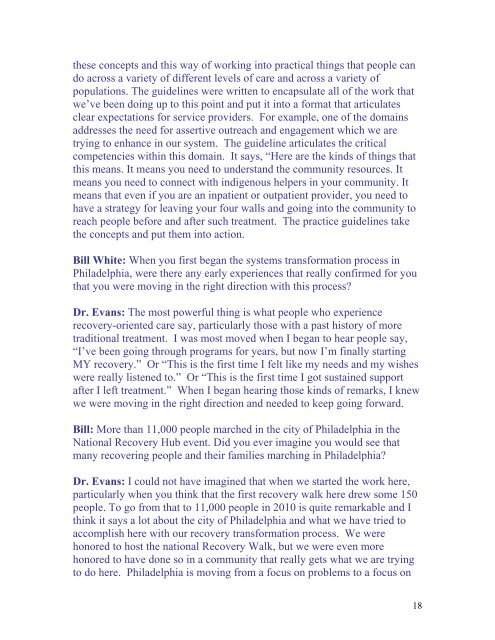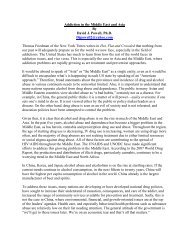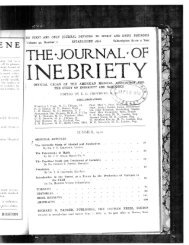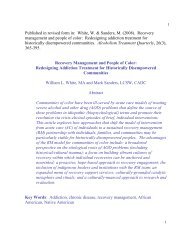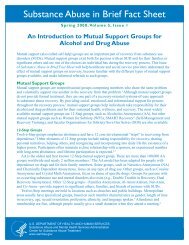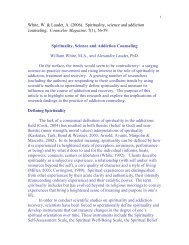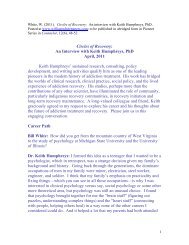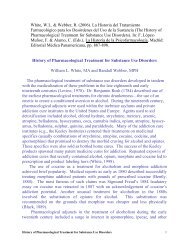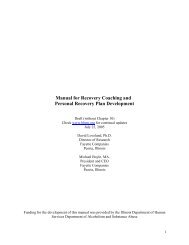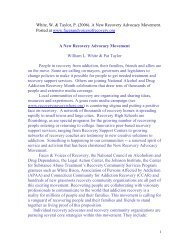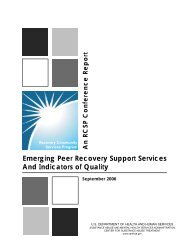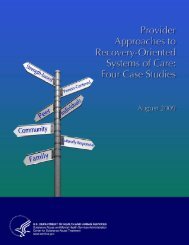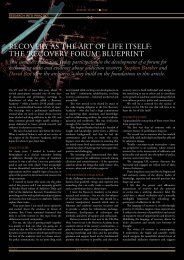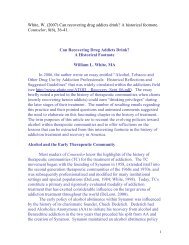An Interview with Arthur C. Evans, Jr., PhD Dr. Arthu - William L. White
An Interview with Arthur C. Evans, Jr., PhD Dr. Arthu - William L. White
An Interview with Arthur C. Evans, Jr., PhD Dr. Arthu - William L. White
- No tags were found...
Create successful ePaper yourself
Turn your PDF publications into a flip-book with our unique Google optimized e-Paper software.
these concepts and this way of working into practical things that people cando across a variety of different levels of care and across a variety ofpopulations. The guidelines were written to encapsulate all of the work thatwe’ve been doing up to this point and put it into a format that articulatesclear expectations for service providers. For example, one of the domainsaddresses the need for assertive outreach and engagement which we aretrying to enhance in our system. The guideline articulates the criticalcompetencies <strong>with</strong>in this domain. It says, “Here are the kinds of things thatthis means. It means you need to understand the community resources. Itmeans you need to connect <strong>with</strong> indigenous helpers in your community. Itmeans that even if you are an inpatient or outpatient provider, you need tohave a strategy for leaving your four walls and going into the community toreach people before and after such treatment. The practice guidelines takethe concepts and put them into action.Bill <strong>White</strong>: When you first began the systems transformation process inPhiladelphia, were there any early experiences that really confirmed for youthat you were moving in the right direction <strong>with</strong> this process?<strong>Dr</strong>. <strong>Evans</strong>: The most powerful thing is what people who experiencerecovery-oriented care say, particularly those <strong>with</strong> a past history of moretraditional treatment. I was most moved when I began to hear people say,“I’ve been going through programs for years, but now I’m finally startingMY recovery.” Or “This is the first time I felt like my needs and my wisheswere really listened to.” Or “This is the first time I got sustained supportafter I left treatment.” When I began hearing those kinds of remarks, I knewwe were moving in the right direction and needed to keep going forward.Bill: More than 11,000 people marched in the city of Philadelphia in theNational Recovery Hub event. Did you ever imagine you would see thatmany recovering people and their families marching in Philadelphia?<strong>Dr</strong>. <strong>Evans</strong>: I could not have imagined that when we started the work here,particularly when you think that the first recovery walk here drew some 150people. To go from that to 11,000 people in 2010 is quite remarkable and Ithink it says a lot about the city of Philadelphia and what we have tried toaccomplish here <strong>with</strong> our recovery transformation process. We werehonored to host the national Recovery Walk, but we were even morehonored to have done so in a community that really gets what we are tryingto do here. Philadelphia is moving from a focus on problems to a focus on18


